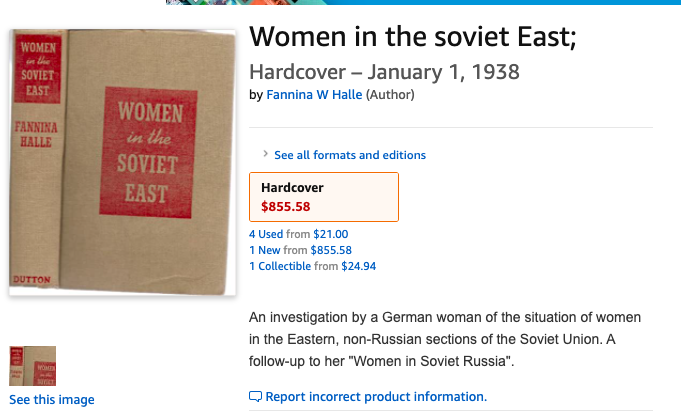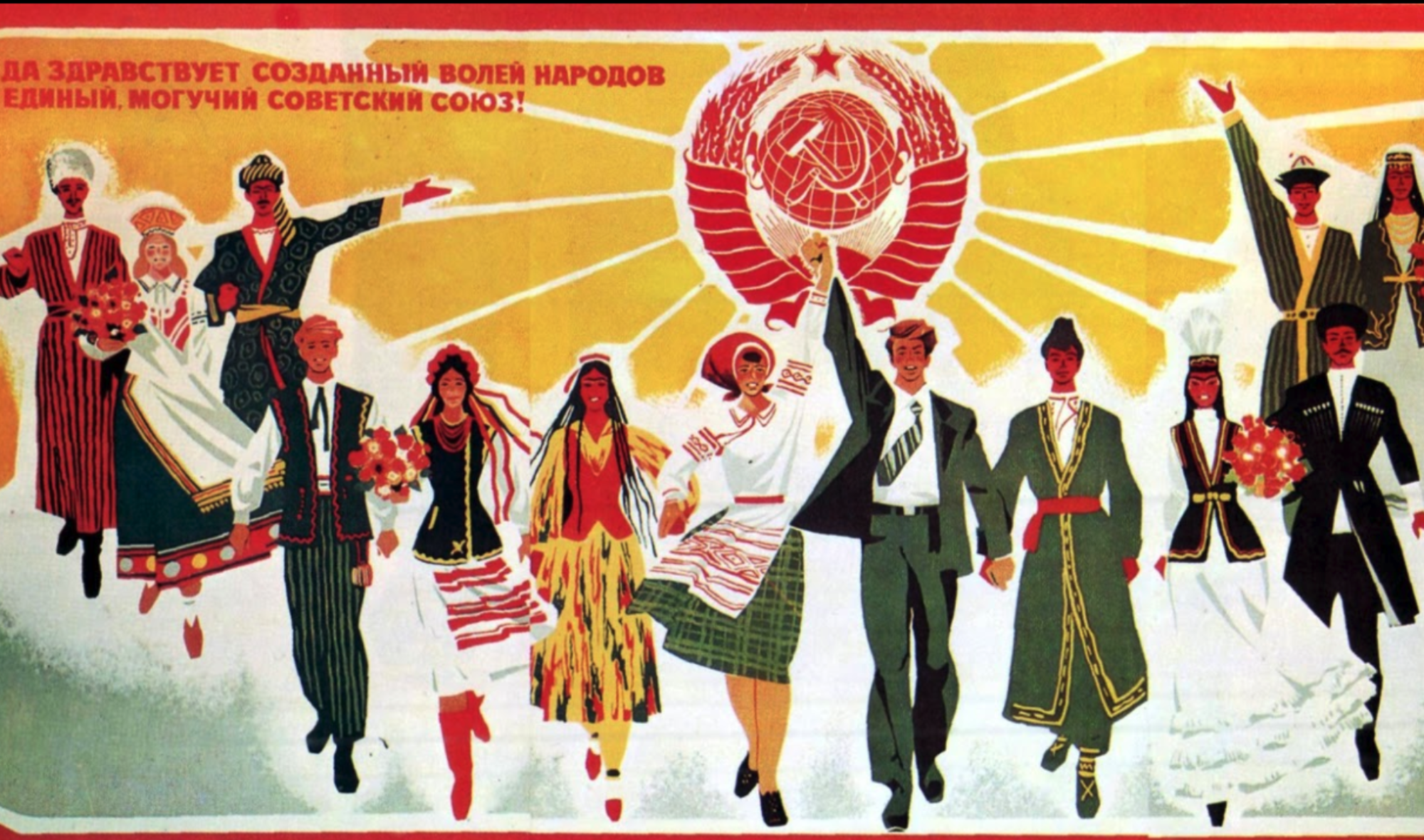The Soviet Union under Joseph Stalin was an oppressive and totalitarian regime whose callousness and ineptitude led to innumerable atrocities. These atrocities are crystalized by the accounts of Mukhamet Shaiakhmetov in 1930s central asia. Farm collectivization forcibly removed food from the hands of farmers and then Soviet mismanagement of that food led to a national famine in the USSR. Mukhamet witnessed these policies in effect as his father was labeled a kulak and dispossessed and sent to work coal, not to mention the other atrocities that his family was forced to endure. We see first hand the Soviet dekulakization policy at play when the author recounts the confiscation “You still have some livestock, expensive things even gold hidden from authorities, hand them over!”(56) These actions were taken against more productive farmers as they were framed as enemies of state for being obstacles in the farming collectivization effort. Mukhamet details his and others confusion at the government’s persecution against people who were simple workers. In this class we have discussed Soviet policies at both a micro and macro scale, discussing both policy and how it affected individuals. However the scale of the atrocities committed in the name of collectivization are hard to fathom so does this memoir illicit a more comprehensive grasp on how these actions affected the lives of people confused about their designation as an enemy of the state? Also is there at least an element of immorality that is at play when discussing how the Soviets applied these policies or is it simple ineptitude?
The Great Loss
The Silent Steppe is a heartbreaking story about the author who had to endure the most gruesome conditions ever. Not only did the author suffer under severe conditions, but he also lost family during the soviet’s policy. This book in my opinion is a very good read and also an eye-opening experience when reading this auto-biography. The quote I selected touches upon what we hit on in class based on the soviet policy which is known as Collectivization. ” The Immediate cause was a bad harvest following a period of drought- but collectivization made the consequences many times worse for the Kazakh people. Transferred Hastily and without any preparation to a settled way of life and method of farming, the nomadic livestock breeders simply did not have the means or expertise to run collective farms efficiently ” (Page 135 Chapter 15) Based on the statement made above do we think that Stalin and the Soviet Union could have changed or got rides of the policy that was in place? Also, what outcomes or effects could have this had within the region of Central Asia.
Inconsistency of Soviet Ideology
It seems as though though throughout this course the Soviets most often paint conflicts as class struggles, even when in reality the conflict may not have to do with class at all. An example of this is the Chust incident described in today’s reading. Northrop explains how “soviet analyst explained what happened in Chust through the prism of class conflict (Northrop, 148). “When the Chust affair was shoehorned into a class-based analytical scheme, it no longer signified broad-based popular resistance to the hujum or against Soviet power” (Northrop, 149). Northrop explains that the affair was more of a religious conflict and a response to soviet power that illustrated the fact that many people opposed Soviet rule. So, my question is how does this misinterpretation effect Soviet officials and policy makers residing over Uzbek?
Hujum promises and Communist realities
The necessity of cultural reform in Central Asia by Soviet policy was apparent to administrators was obvious even as the first entered the region. The key point of the cultural conflict between the indigenous groups and Soviet officials was in the policy of Hujum. Hujum much like other policies was ripe with Soviet bureaucratic failures and ineffective failures which came to a head in the Chust affair. The affair demonstrated that the lack of Soviet executive control and meant that officials could not apply policy effectively enough for the policy to succeed. This lead to a failure of the policy overall despite official reports speaking of the absolute success of the program. For Jahon Obidova however Hujum worked to produce the exact the result Soviets hoped for. An ardent Communist that held party ideas above those that her culture gave her. “You said according to sharia exploitation was forbidden, and all Muslims should live in conditions of equality. So then why do you yourself own about 70 percent of the land?” pg 312. She used the communist infrastructure to advance far beyond the situation she found herself in. She then used her platform to promote women’s rights in the region.
While Soviet application of the Hujum was inadequate and ended with many woman who deveiled, reveiling. There is still the more important question of if this program was properly reported on and administered effectively, whether this policy would have been to the legitimate benefit of the majority of women in the region? The question of forced unveiling is a part of the policy, there is also equality under law which was a part of the program. Is forced legal reform as much a violation of Islamic culture as forced unveiling? Is forced unveiling a legitimate way to promote women’s rights? Does Jahon stand as an example of what a woman should do to advance herself and other women or did she betray her people to get ahead? Can her situation be attributed to other woman at that time?
The Great Jahon Obidova
Jahon Obidova was an extremely impressive story within the Soviet Union that was looked highly upon by Soviet officials.” Soviet Accounts, foreigner’s observations, and Jahon Obidova’s own words express the wonder that someone born into her circumstances was able to rise to such prominence; and all credited this both to Obidova’s abilities and to the Communists Party’s policy of drawing women into activism.”( Page 314) Obidova was the success story and picture that came out of Uzbekistan who rose from the ground up. I feel that Jahon was a vital role in the fight for women in Central Asia at the time. Besides, Abidova in my eyes was the starting point for Women’s rights in the Soviet Union. I wonder as to what other roles could have Obidova played also for the Soviet Union? Foremost, was the Soviet Union successful with the mission of trying to get Jahon to get other women to modernize and be politically active?
Chust or Bust? When all else fails, sweep it under the Soviet carpet!
In chapter 4 of Veiled Empire, the author covers the reactions of not only the Uzbeks but the soviet writers who documented the episode. Interestingly, the public reports of how the Uzbeks and Soviets had clashed over the hujum and how they are drastically different compared to the statements made by the OGPU (soviet secret police). Many discrepancies are uncovered, particularly regarding what had happened following the arrest of the eight people involved in the death of a local police officer. What we find is ” a relatively unvarnished view of how the party’s ill-advised actions helped create the crowd that grew steadily in size and hostility, and ultimately provoked violent attacks on Soviet personnel and property” (Northrop, 146). This was interesting because I feel we have rarely heard of the Soviets admitting their mistakes or at least taking accountability for what followed. What didn’t surprise me was how the Soviets had made such reports secretly and then chose not to reconcile their errors. Instead, a secret police report shared how after the arrest of the eight protestors, a contingent investigation called for the naming of 127 participants in the violence of the episode.
The Soviet Perspective in “Veiled Empire”
Throughout chapters 4&5 of Doug Northop’s Veiled Empire: , narrativization was used as a propaganda tool to spread misinformation about the hujum by the Soviet Union. The hujum was intended to dissolve gender inequality; specifically to empower Uzbek Muslim women and share with them the same respect and liberties their male counterparts had. However, there was a pattern of reports being written to communicate mass involvement of Uzbek Muslims at public events, Uzbek female participation of public unveilings, and a general “ upbeat tone” (Northop 167) of the crowd during these events. The language, cultural, and religious barriers set between the Soviet power and Uzbekistan inflicted a struggle for the Soviet government to affectively end the oppression of Uzbek Muslim women. To me, the Soviet’s actions of trying to impose their “enlightened” ways of thinking sound way to similar to their attempts of correcting the “enthic backwardness” other ethnic groups within Russia were ‘plagued’ with. The idea of unveiling women as a step towards socialism seemed like a disguise for a movement towards Soviet assimilation. Questions I conjured during reading this piece are:
- How do gender roles in the Uzbek culture influence classism? Do you think the hujum erupted a social divide within the Uzbek culture or just exploited a divide that was already there?
- Do you think the lack of Soviet protection for women during these “liberation” movements contributed to the failure of the hujum?
- Mentioned at the bottom of page 166, the Jadids were “…marginalized, discredited, and written out the story” of the Soviet / “party activist” written perspective of the hujum. Why do you think that is when before the Jadid and Soviet government shared similar ideologies?
- What roles do colonialism and nationalism play in the relationship of the Soviet government and the Uzbek?
The Perfect Case Example: Jahon Obidova?
Last week, we talked a lot about how the western gaze was applicable to the Soviet’s vision of the veiled Uzbek women. I feel like we really focused on the reported health issues associated with the veil, but I am not sure if we talked about the inherently patriarchal structures at play. There are some points of validity to the claims that women were being oppressed; we see that with the Jahon Obidova story.
As the 13-year-old-fourth-bride to a 65 year old man, Jahon was subjected to horrifying circumstances: “I was not only his slave, without contradiction, silent, obedient, but also the slave of his wives, his children, who repaid all my service daily with kicks, curses, and abuse, because I was still a child who could not stand up to herself, and besides, I was from a poor family” (310).
However, I want to play devil’s advocate and say maybe that this account is the work of Soviet propaganda? I say this because the story fits the party-line a little too well. Also, the citation provided by Marianne Kamp is suspicious. The quote above is cited to her fifth footnote: a book published in 1938 … I want to specify that I am NOT supporting the idea that Jahon did not experience these things, but instead I might suggest that she was encouraged to talk about her experience in a very particular way. Thoughts?
Anyway, I think Jahon’s story further complicates our assessment of the USSR’s cultural programs because she is a success story. Their programs provided her with opportunities that she would not have had.


